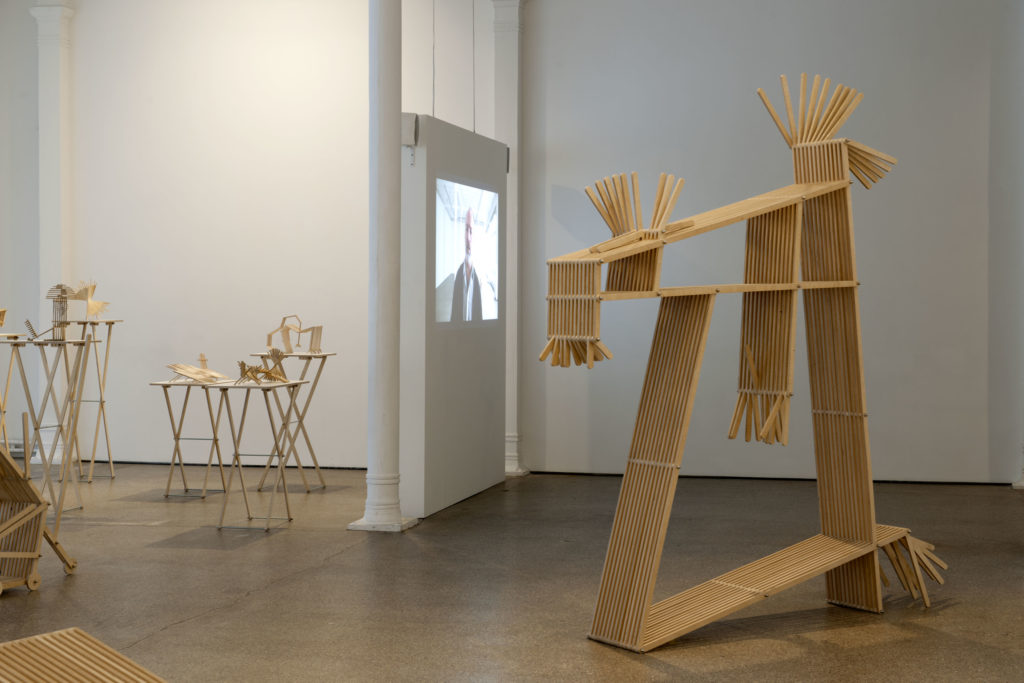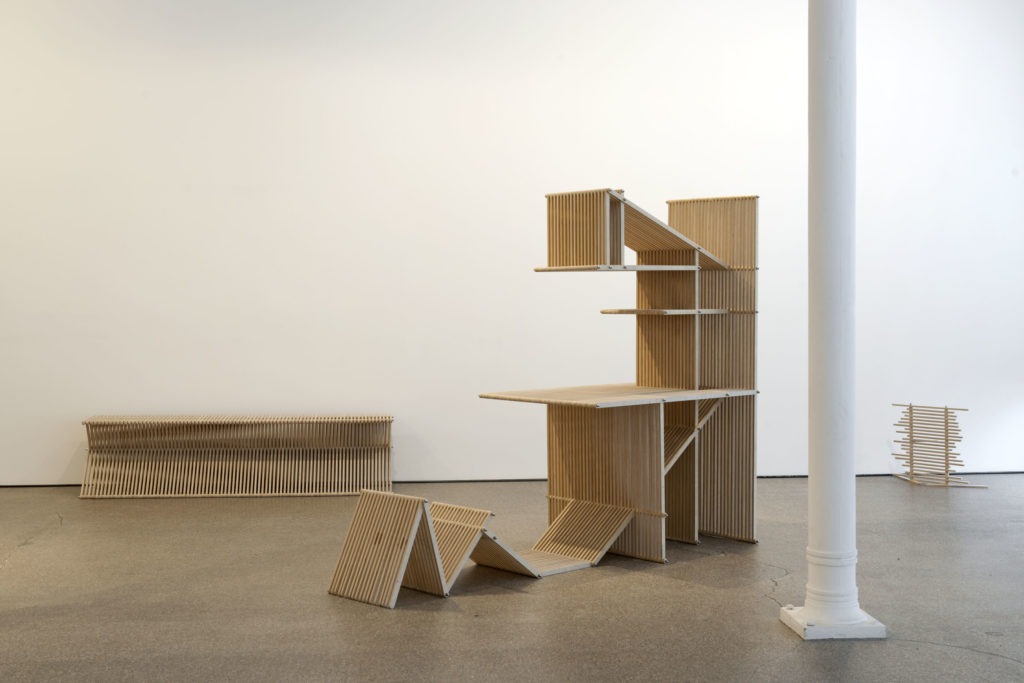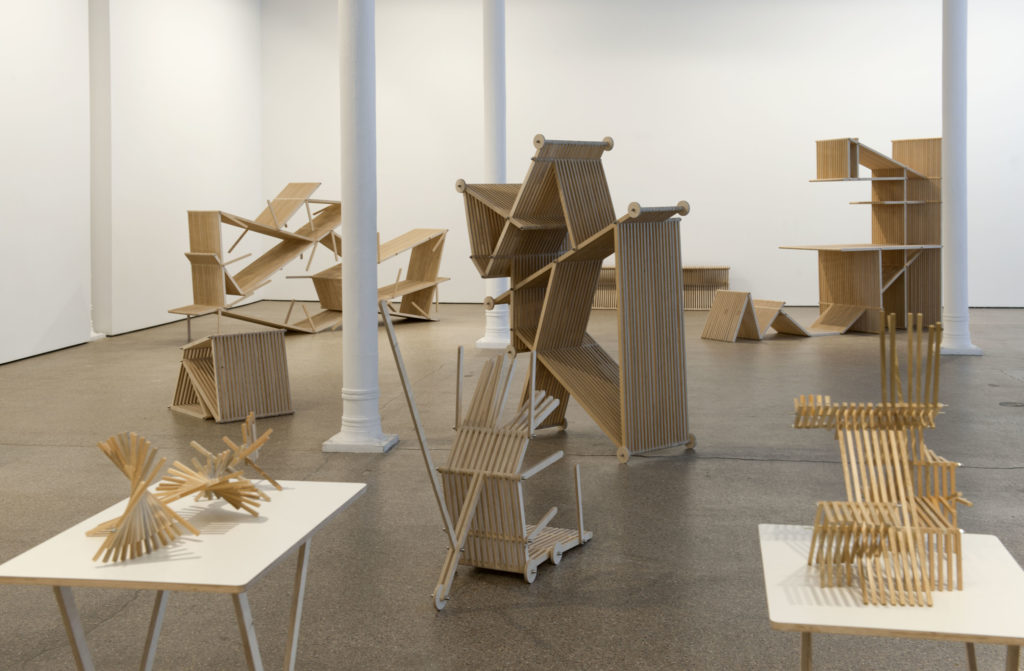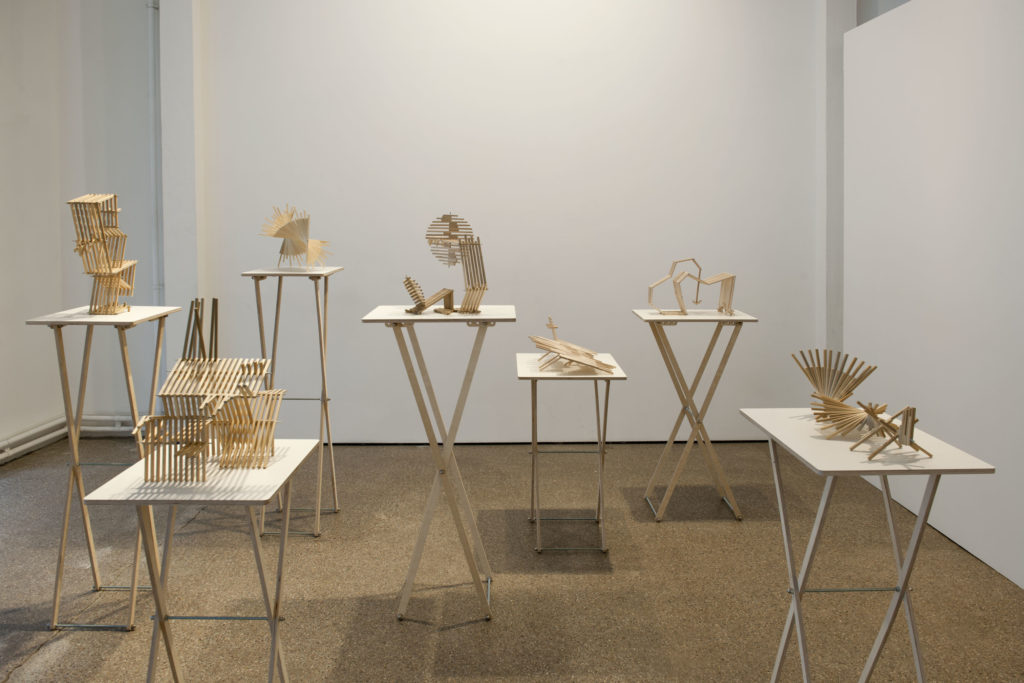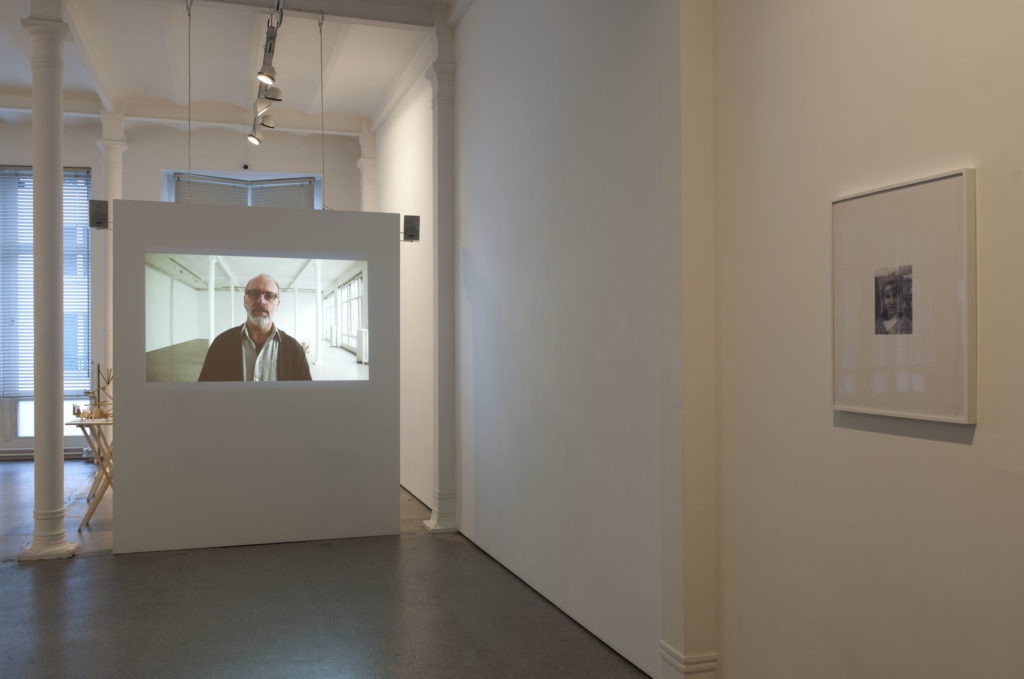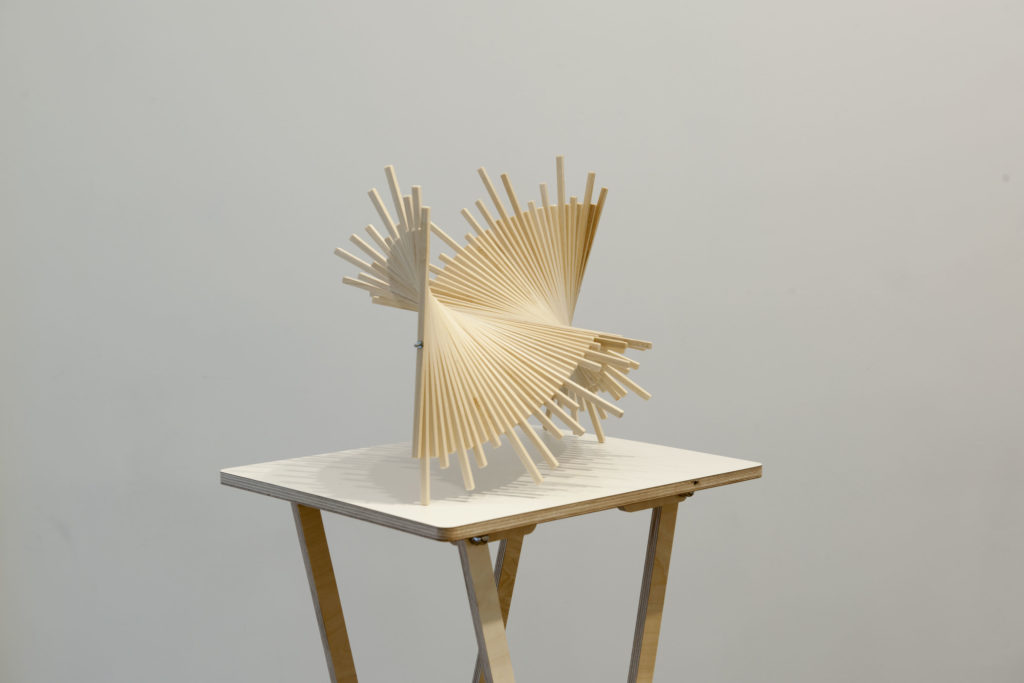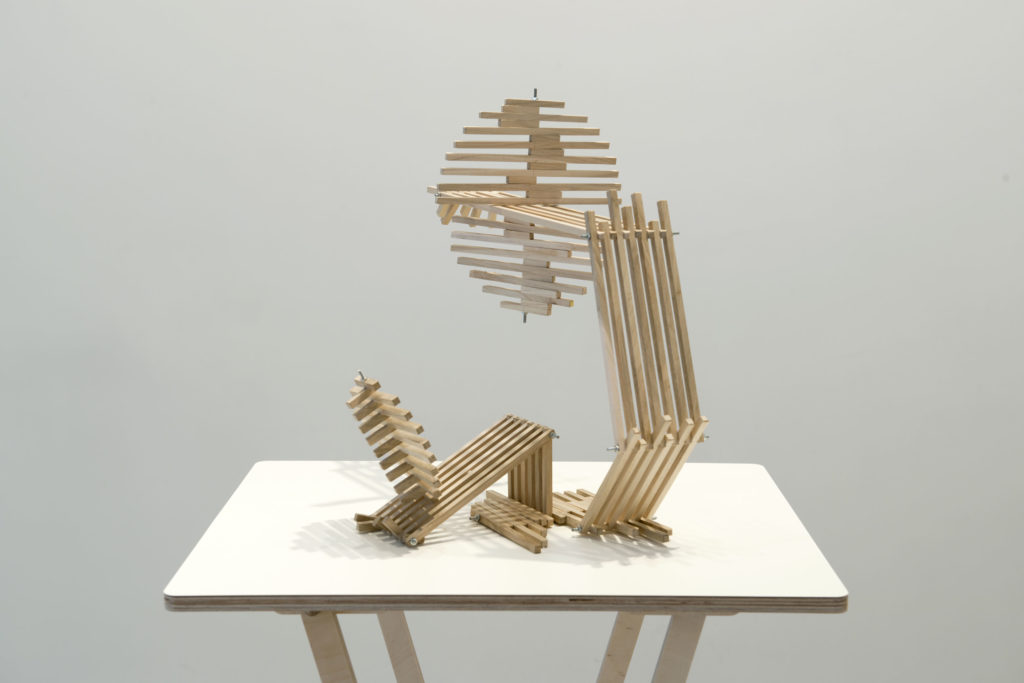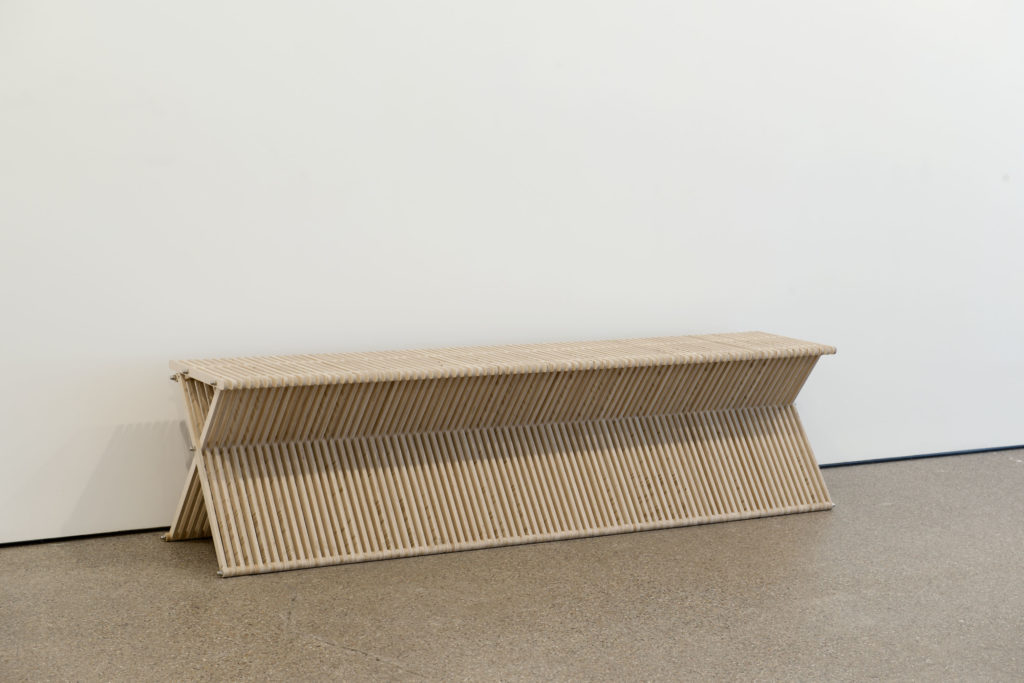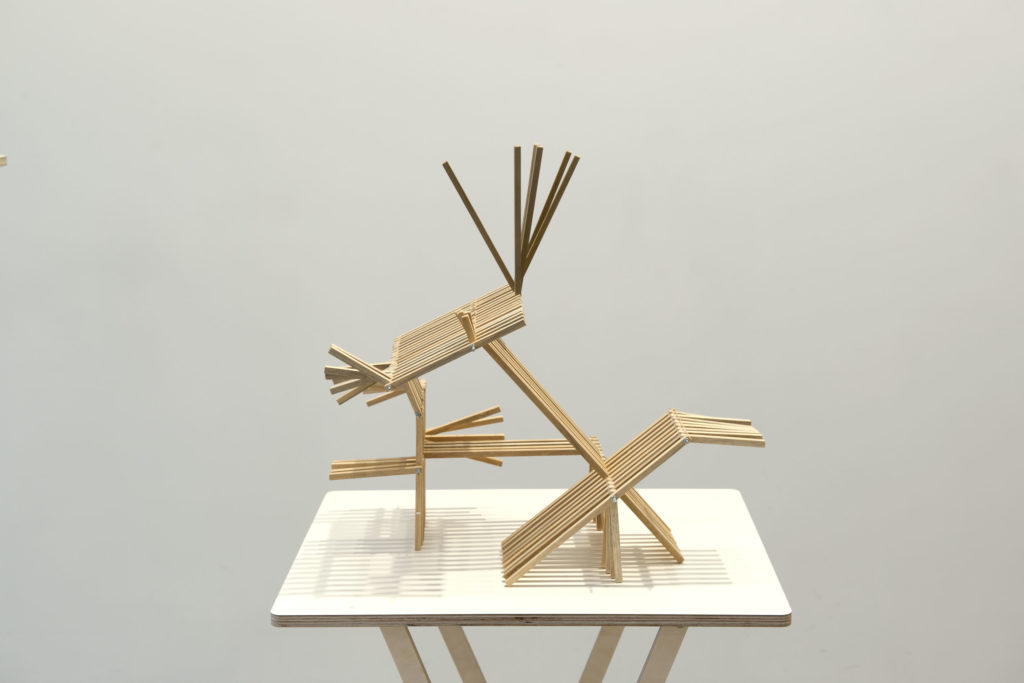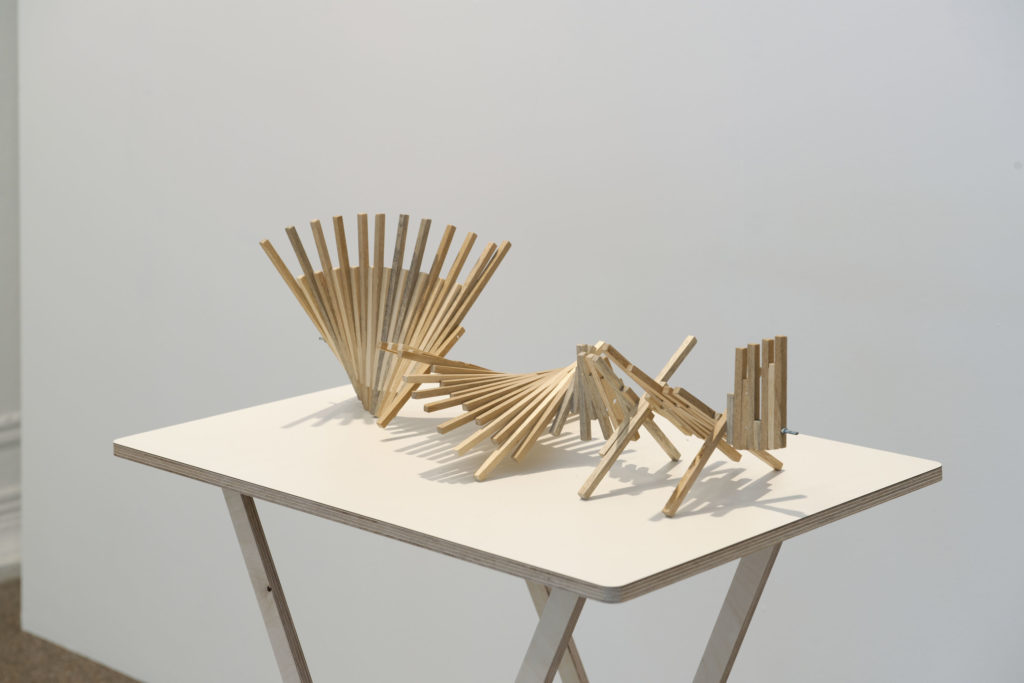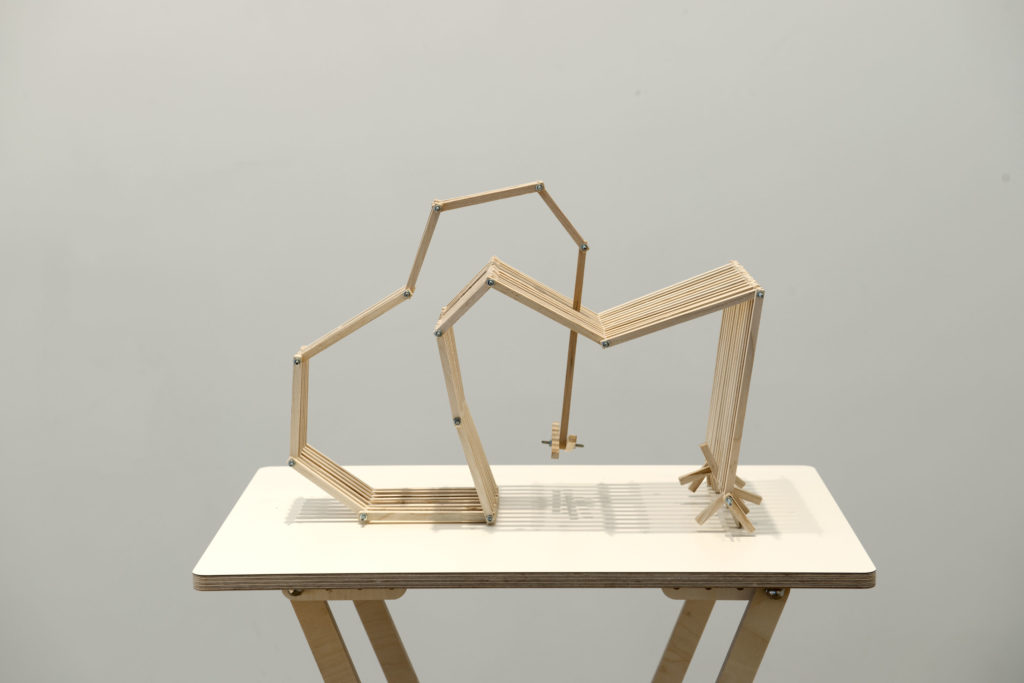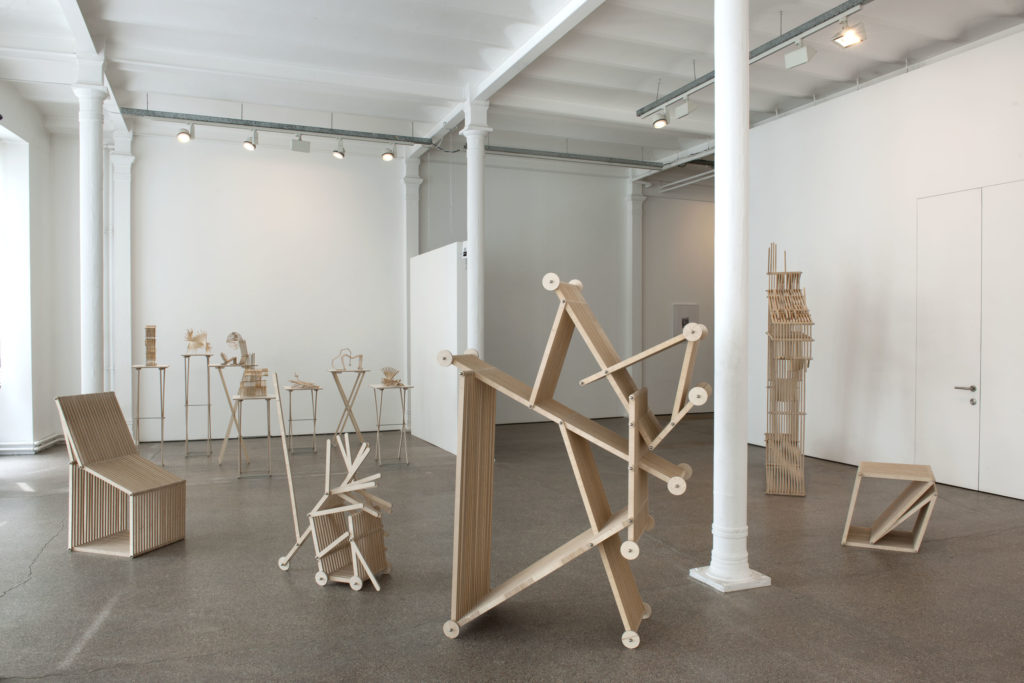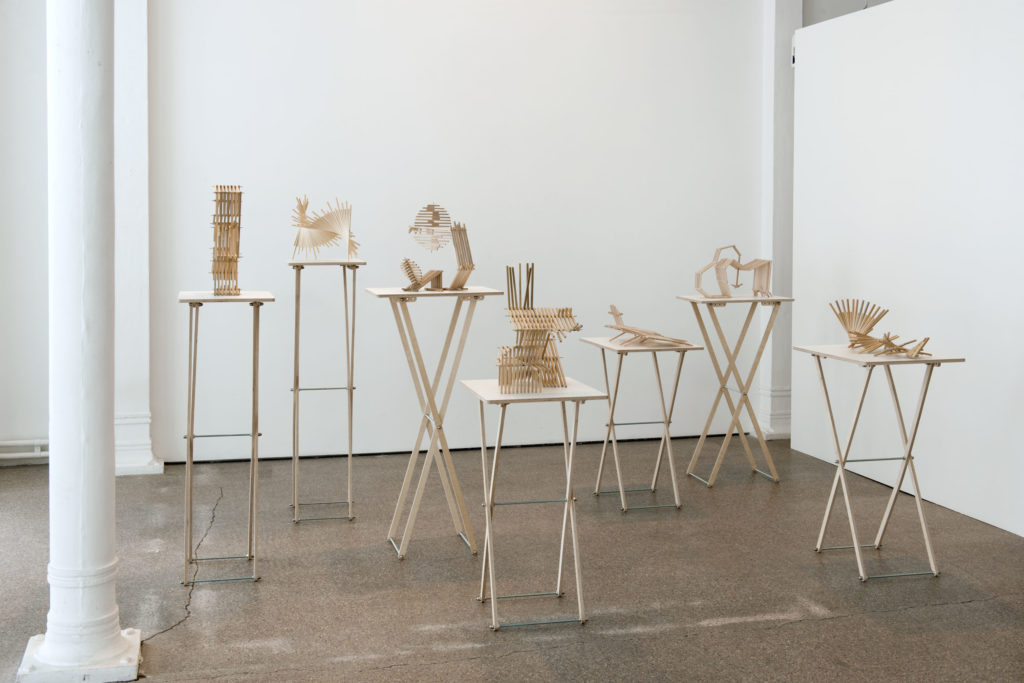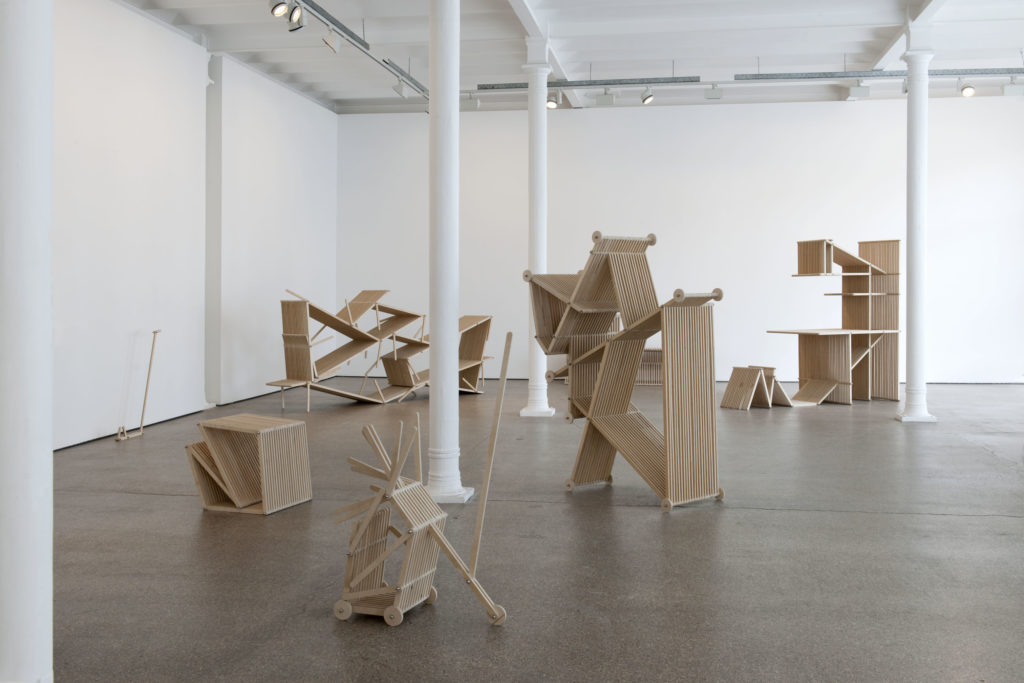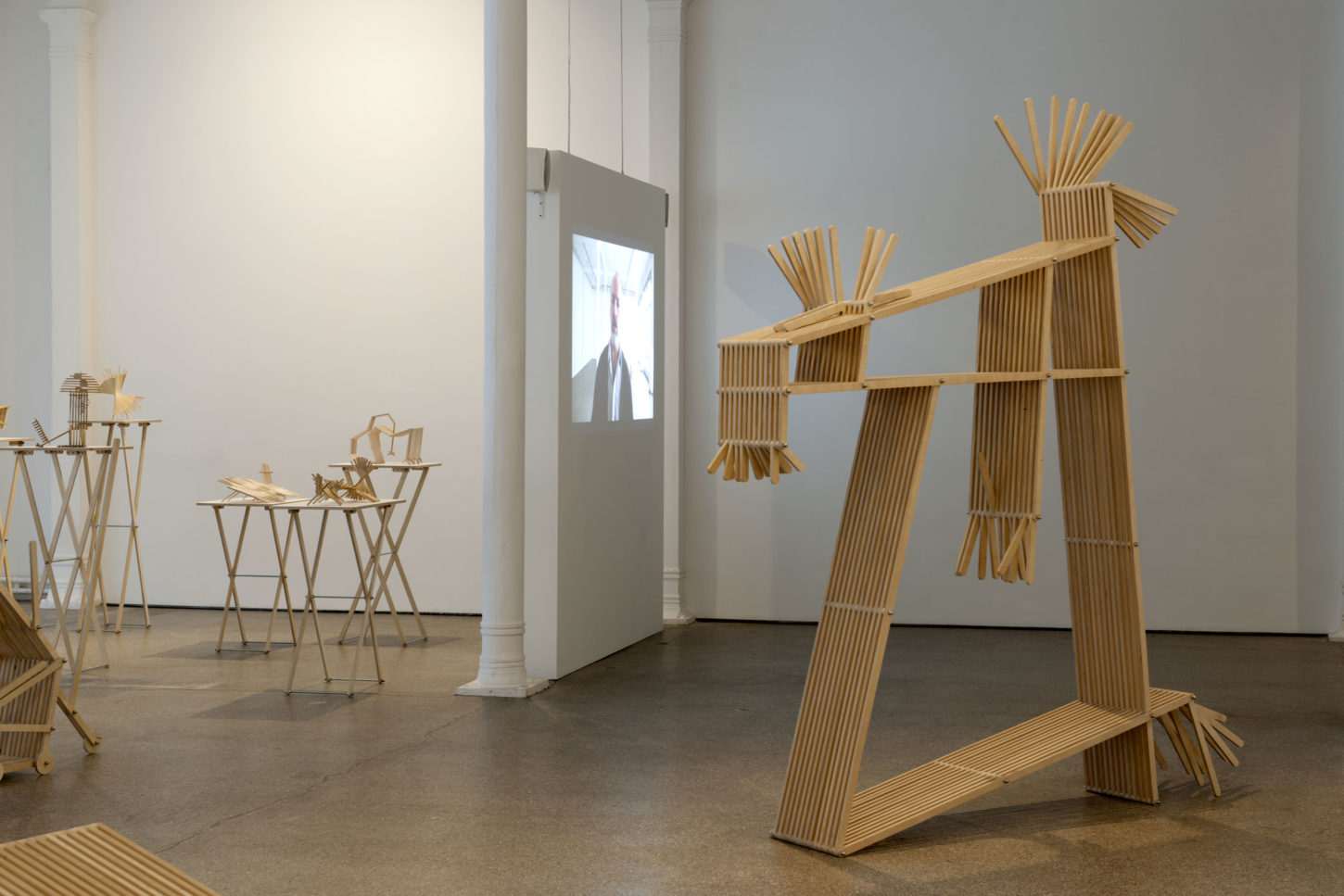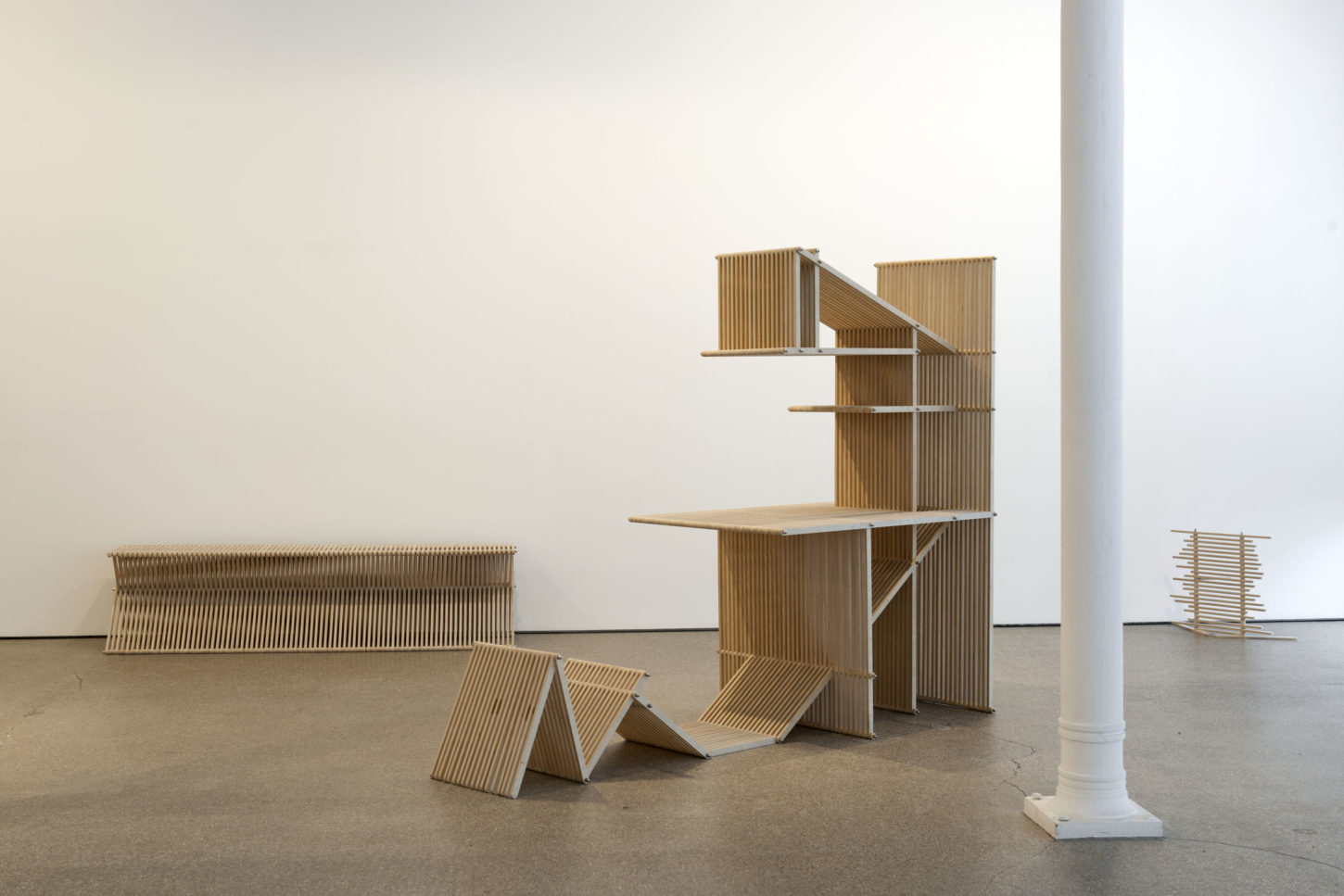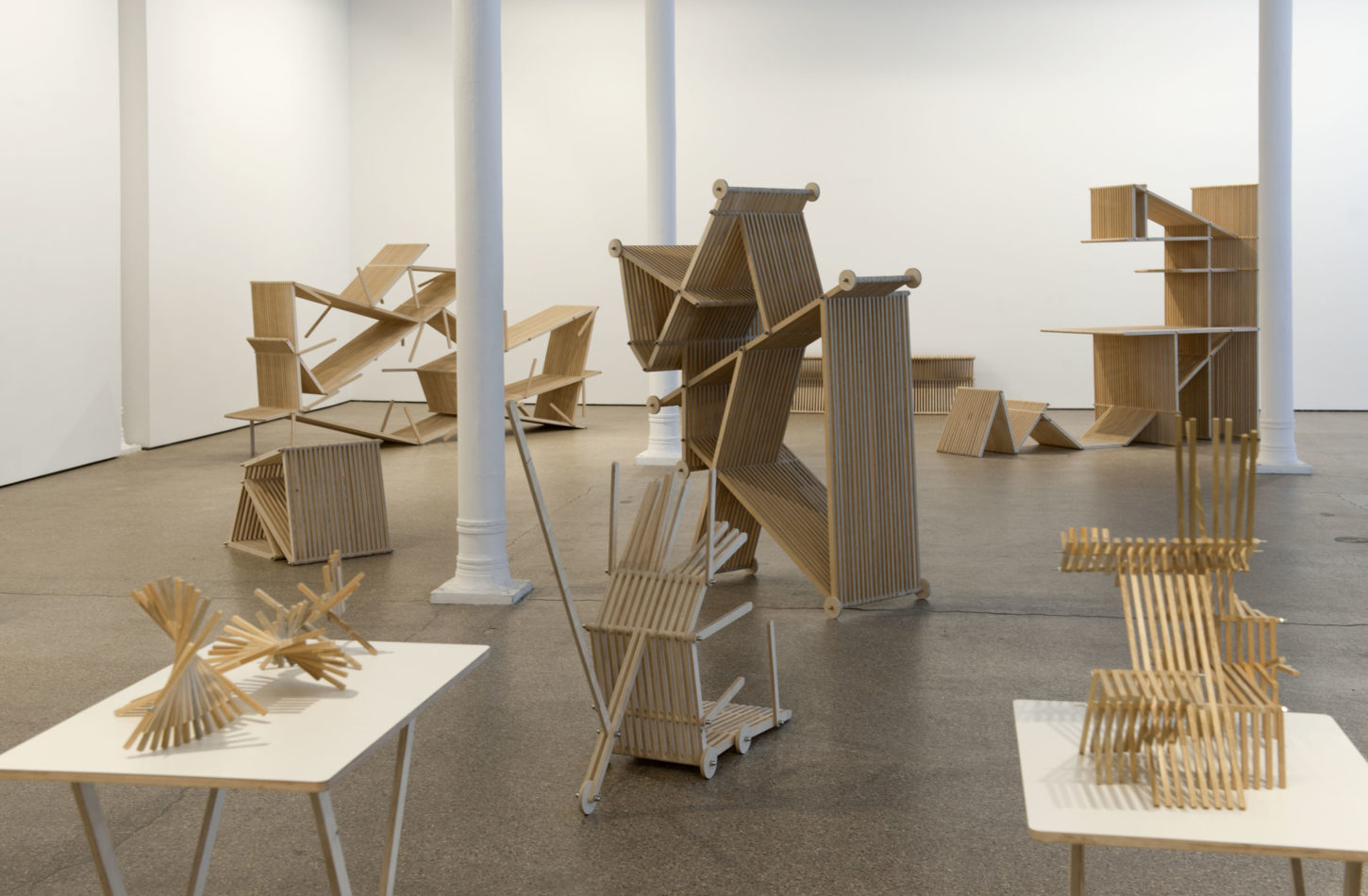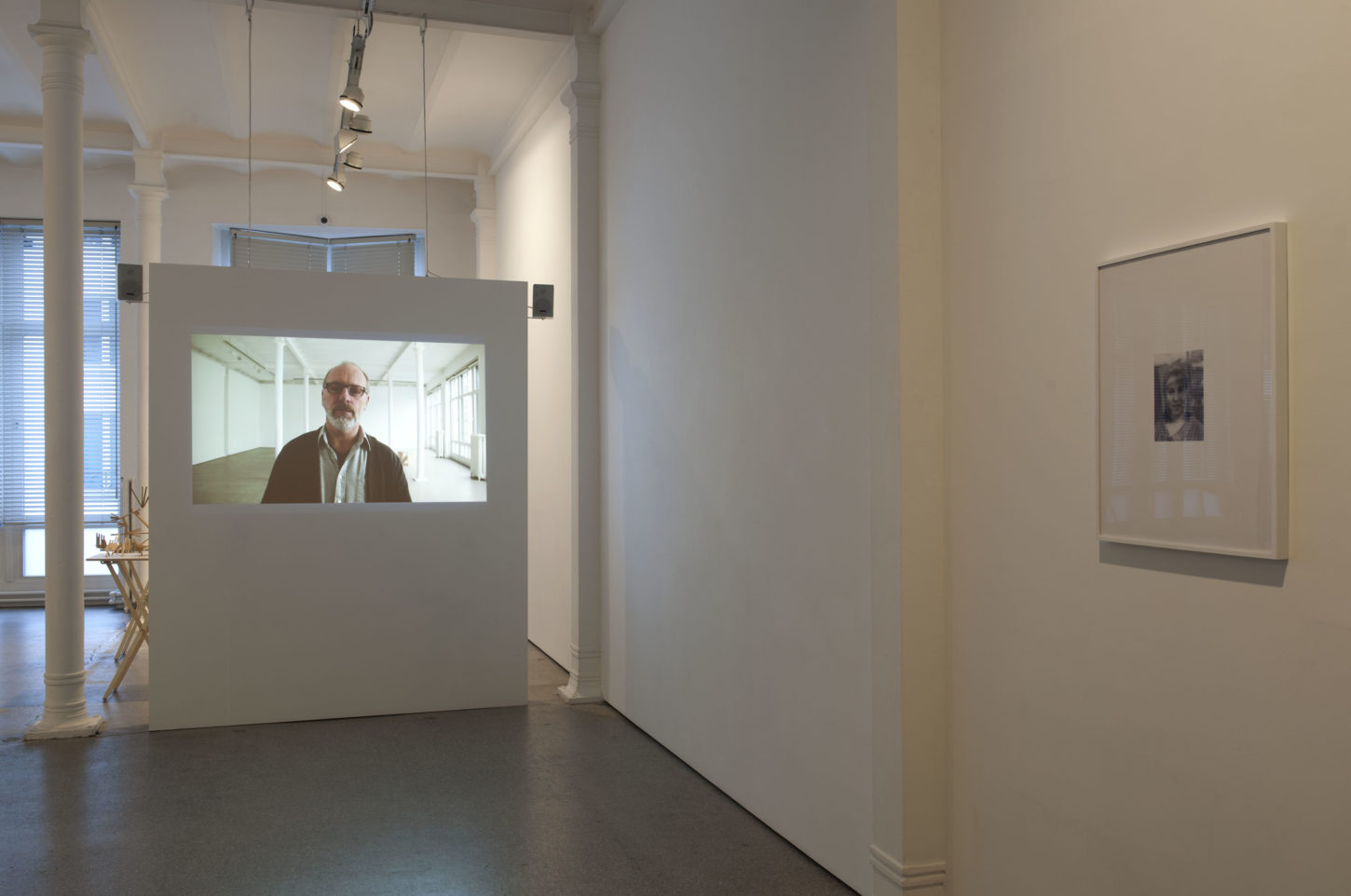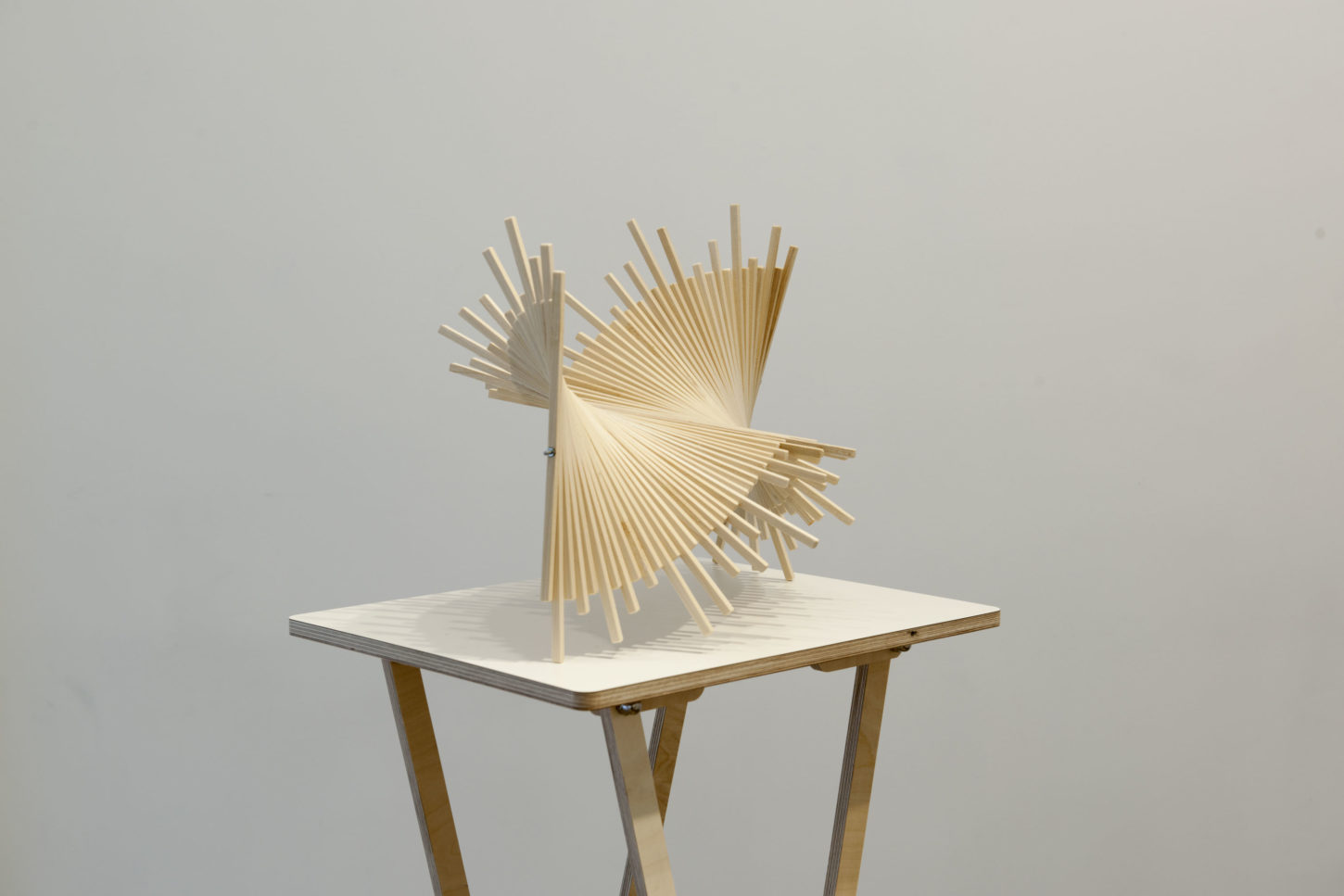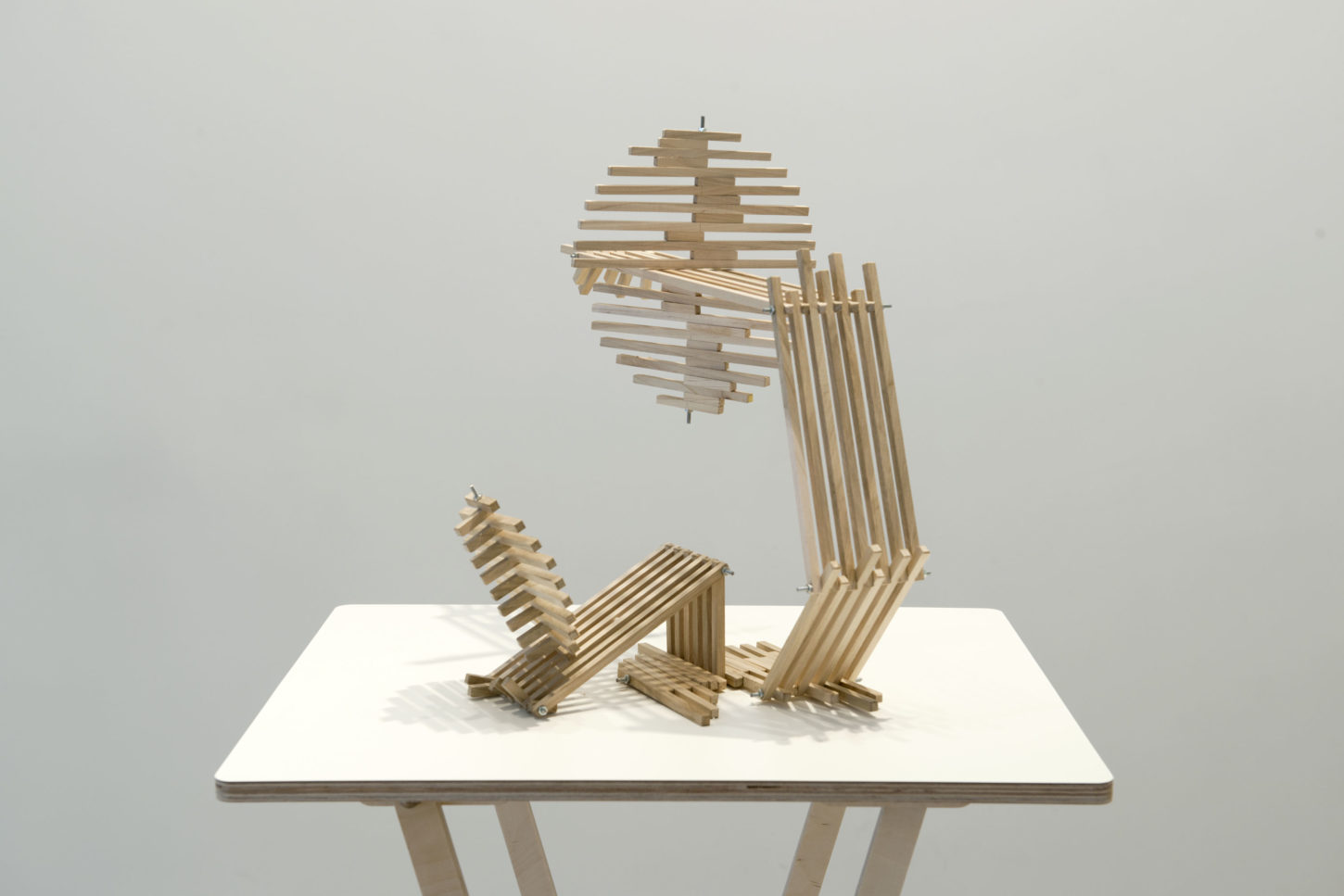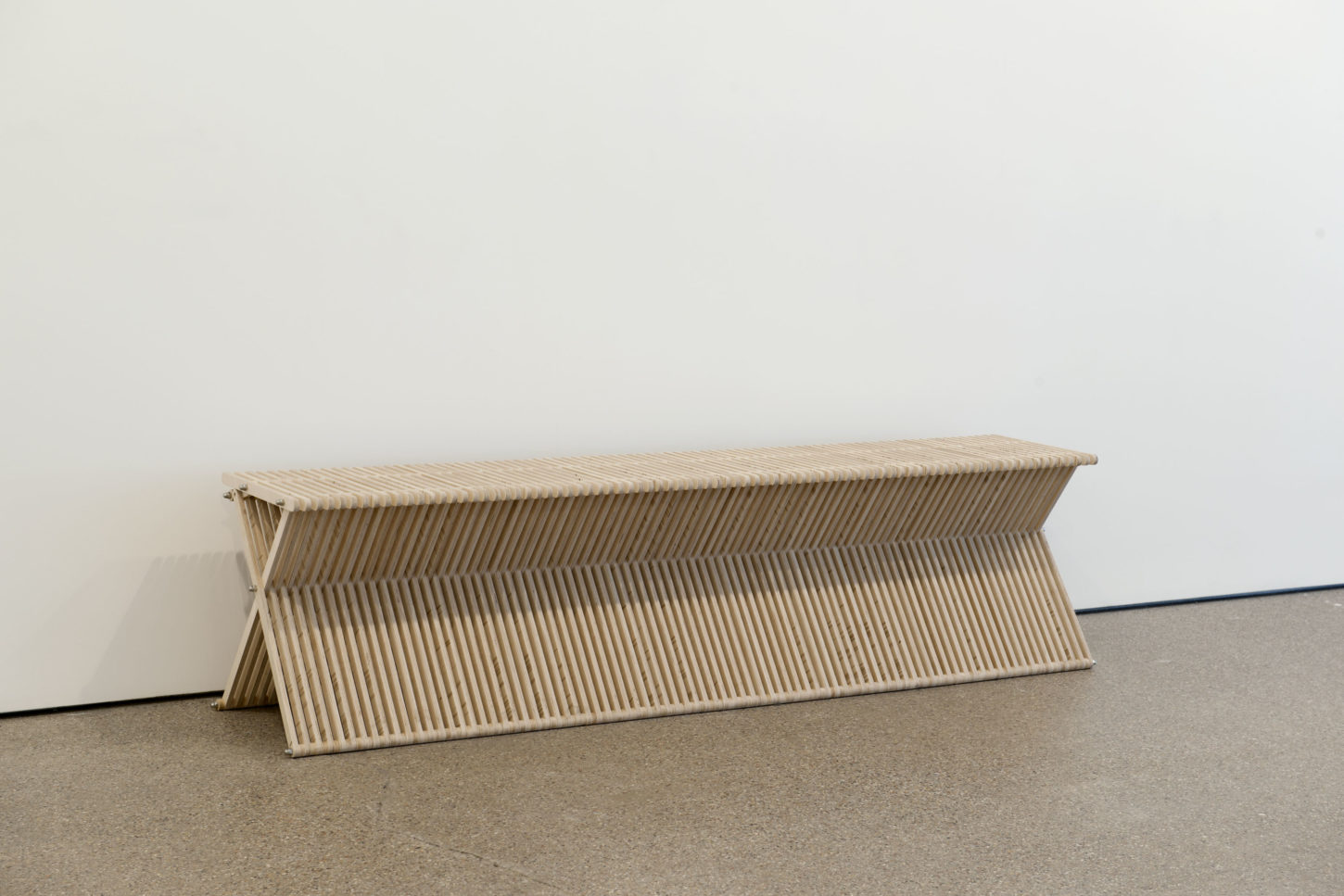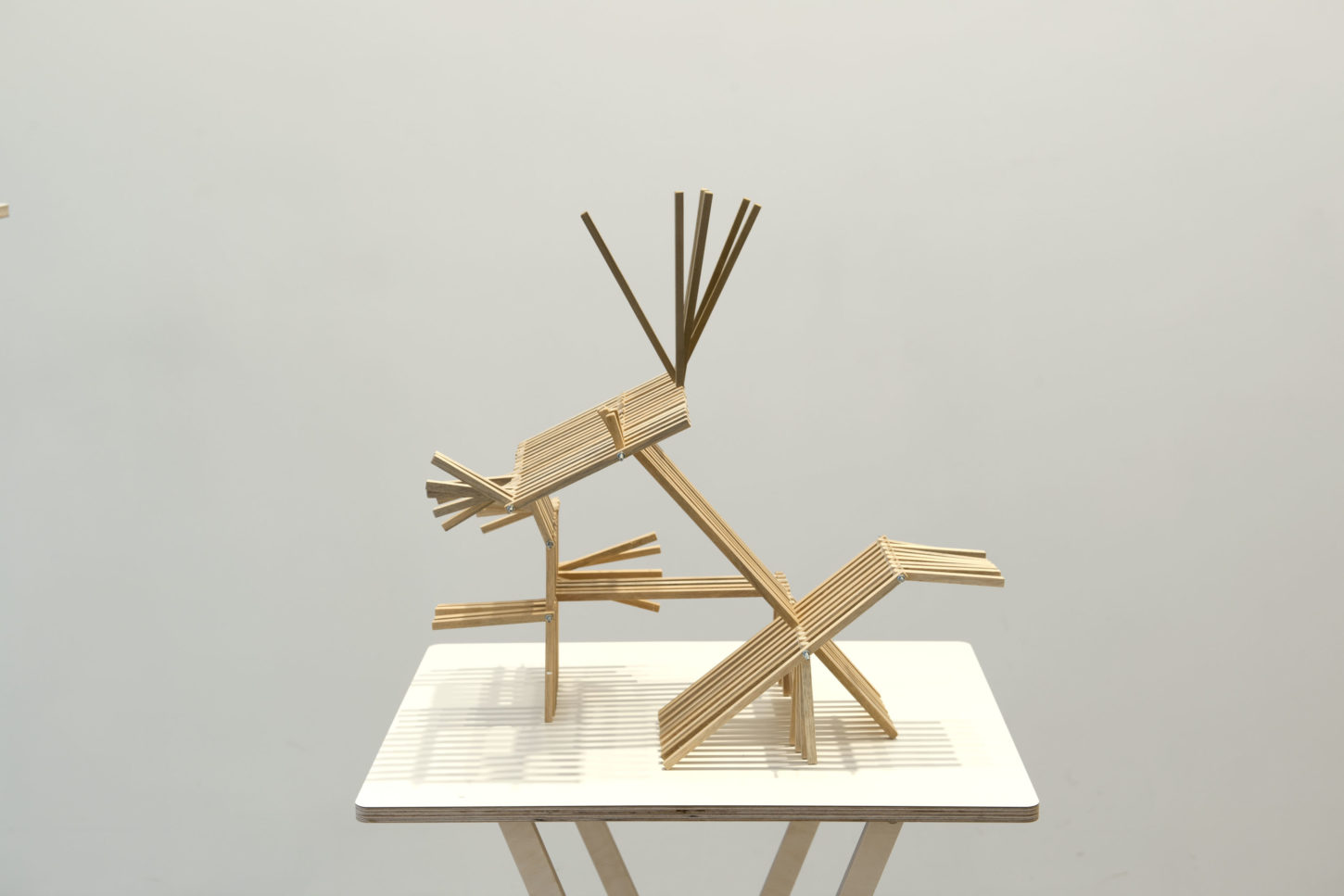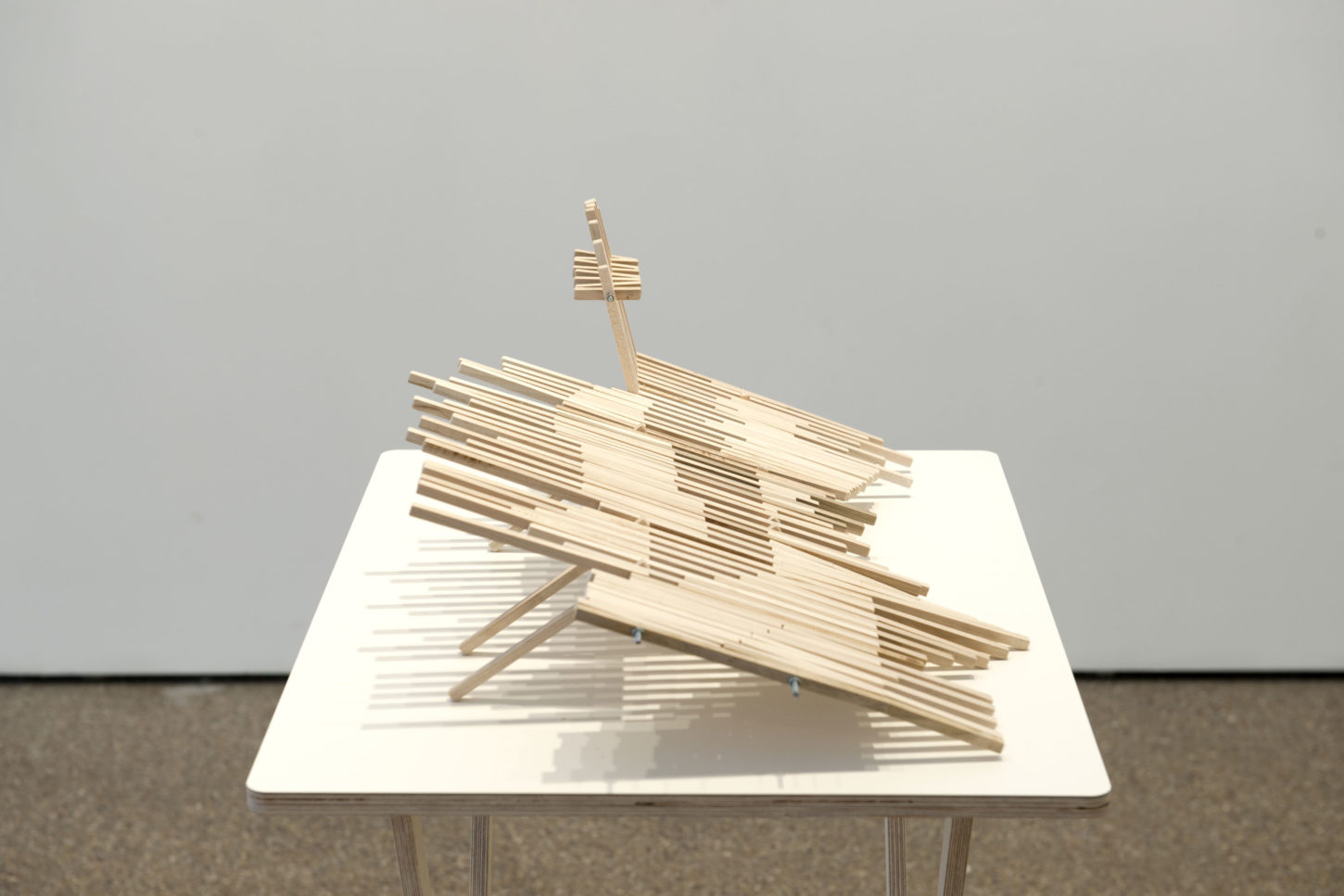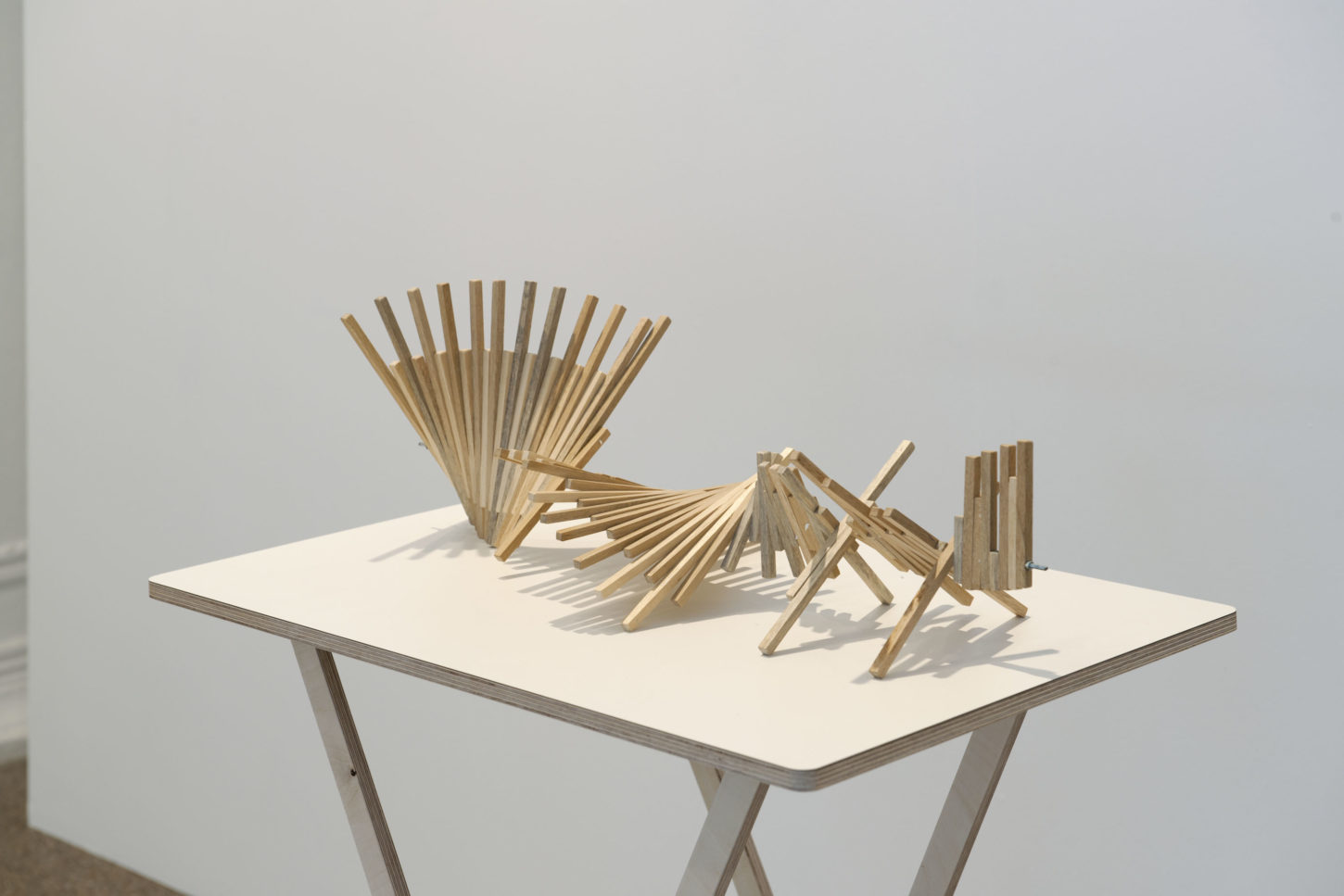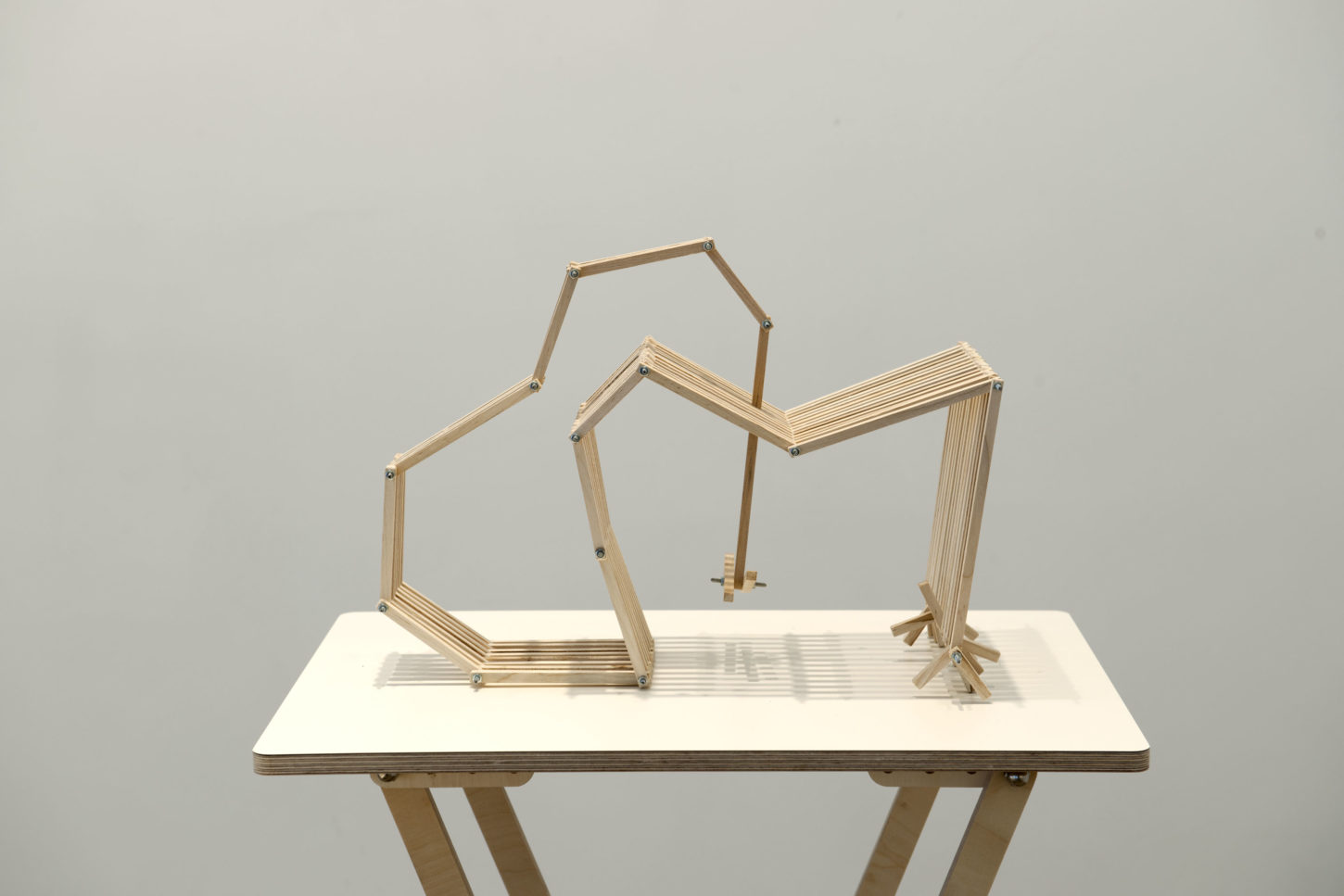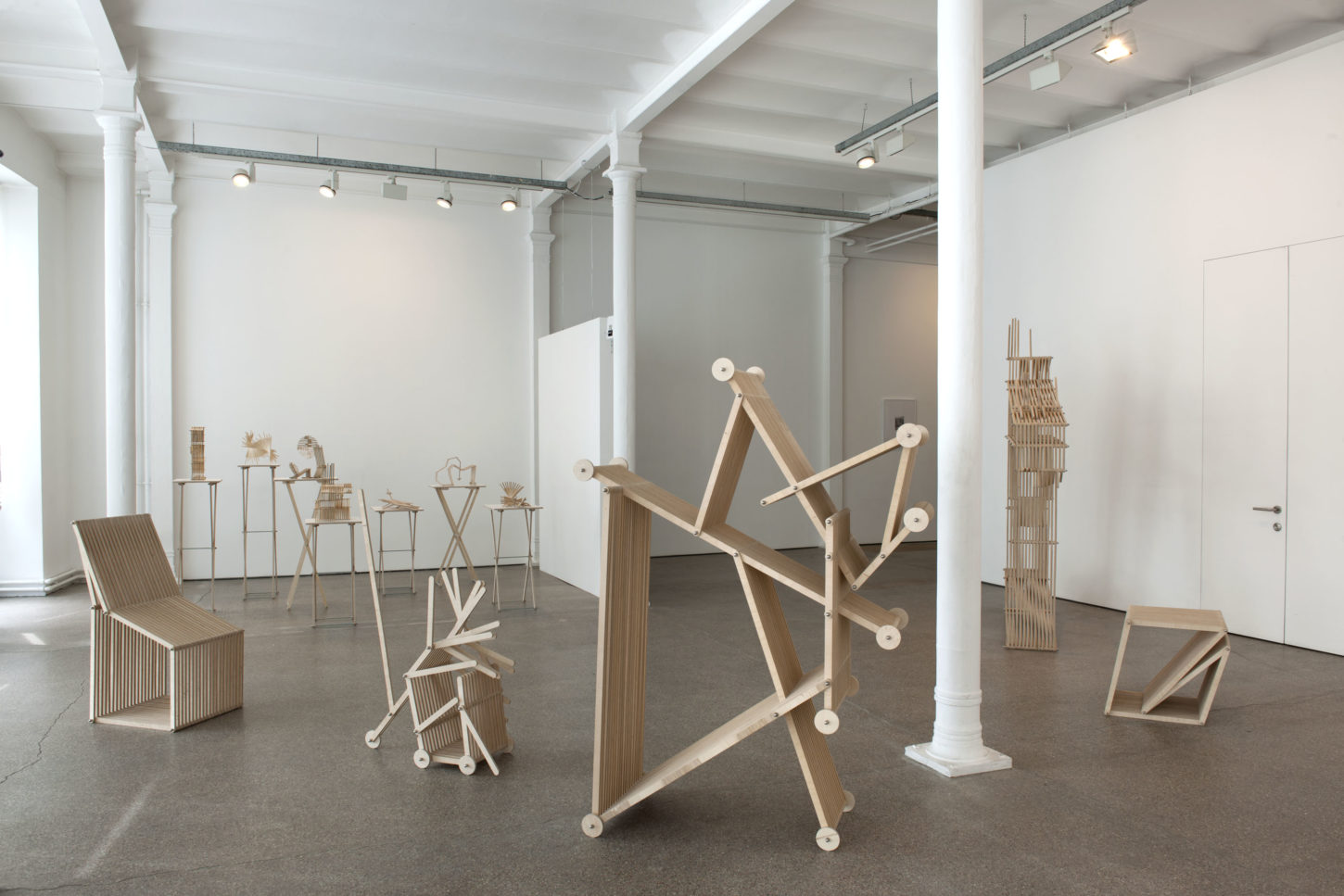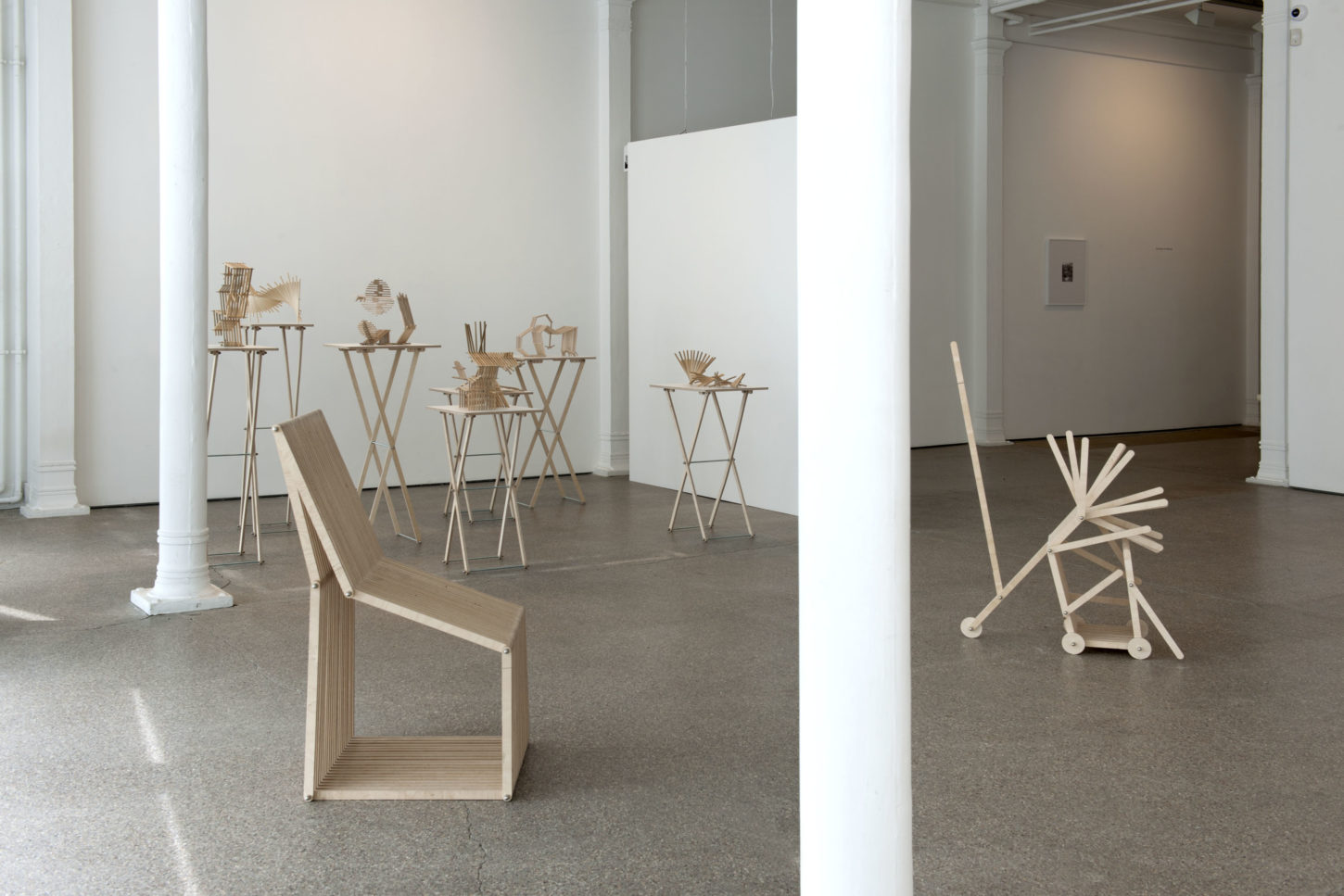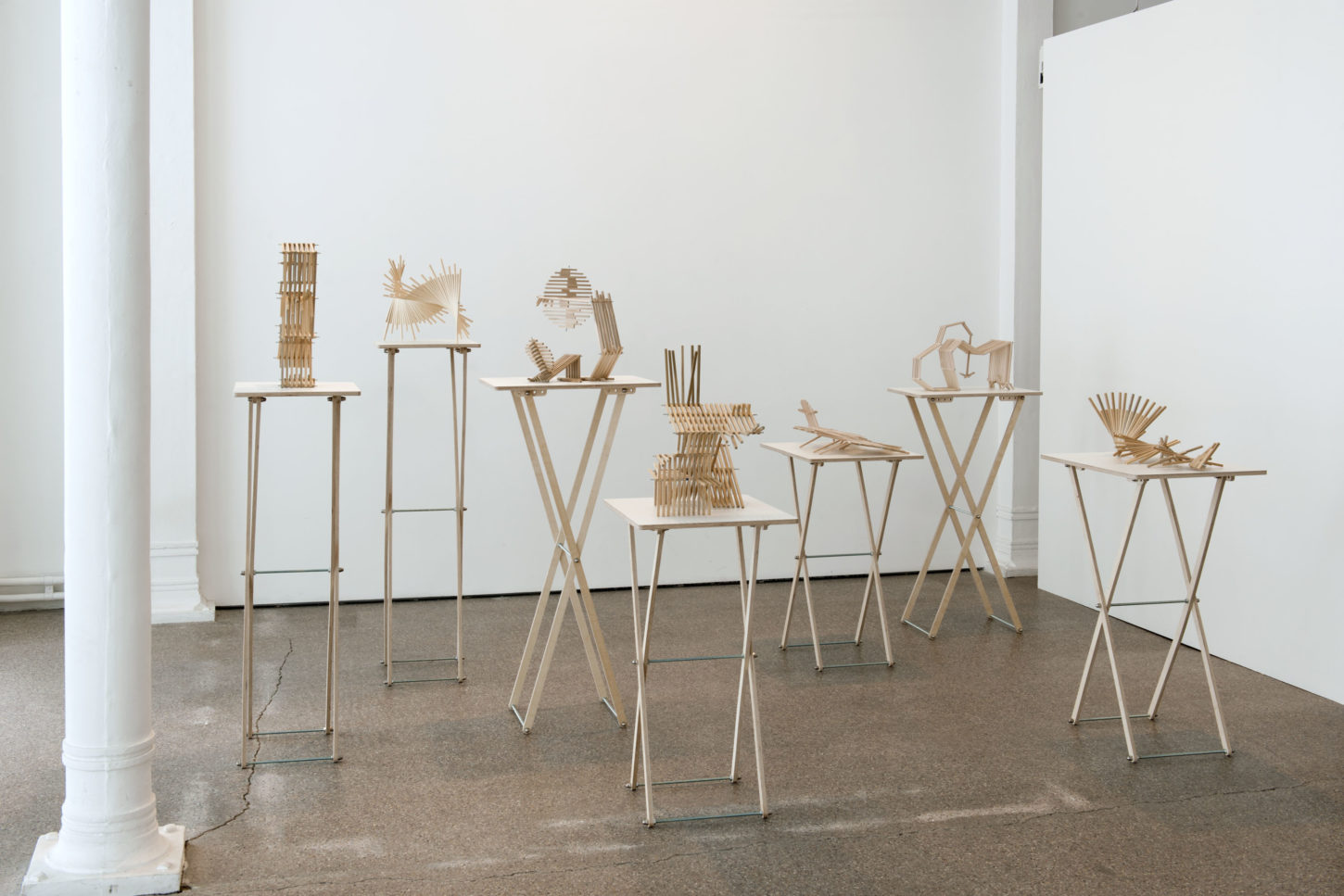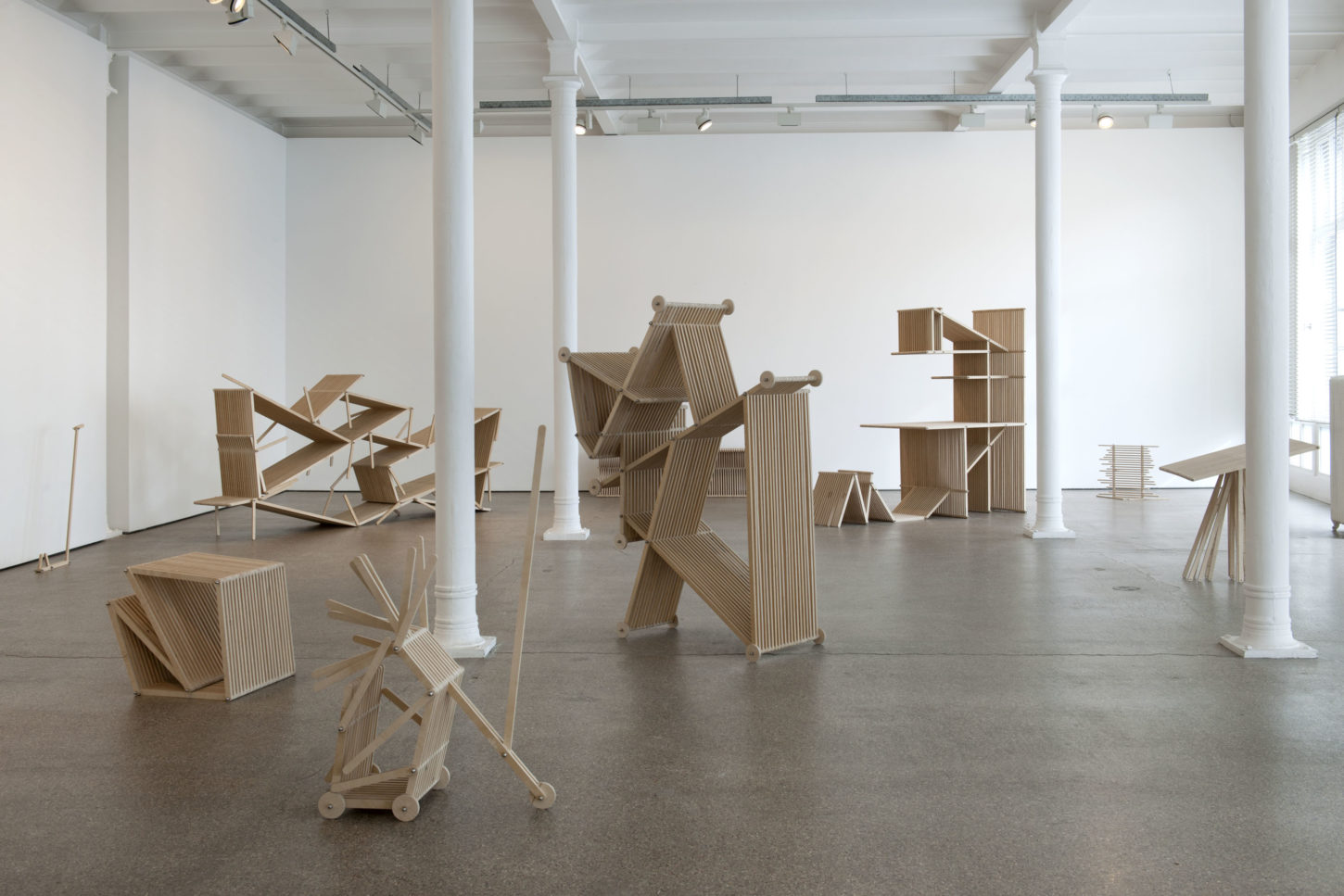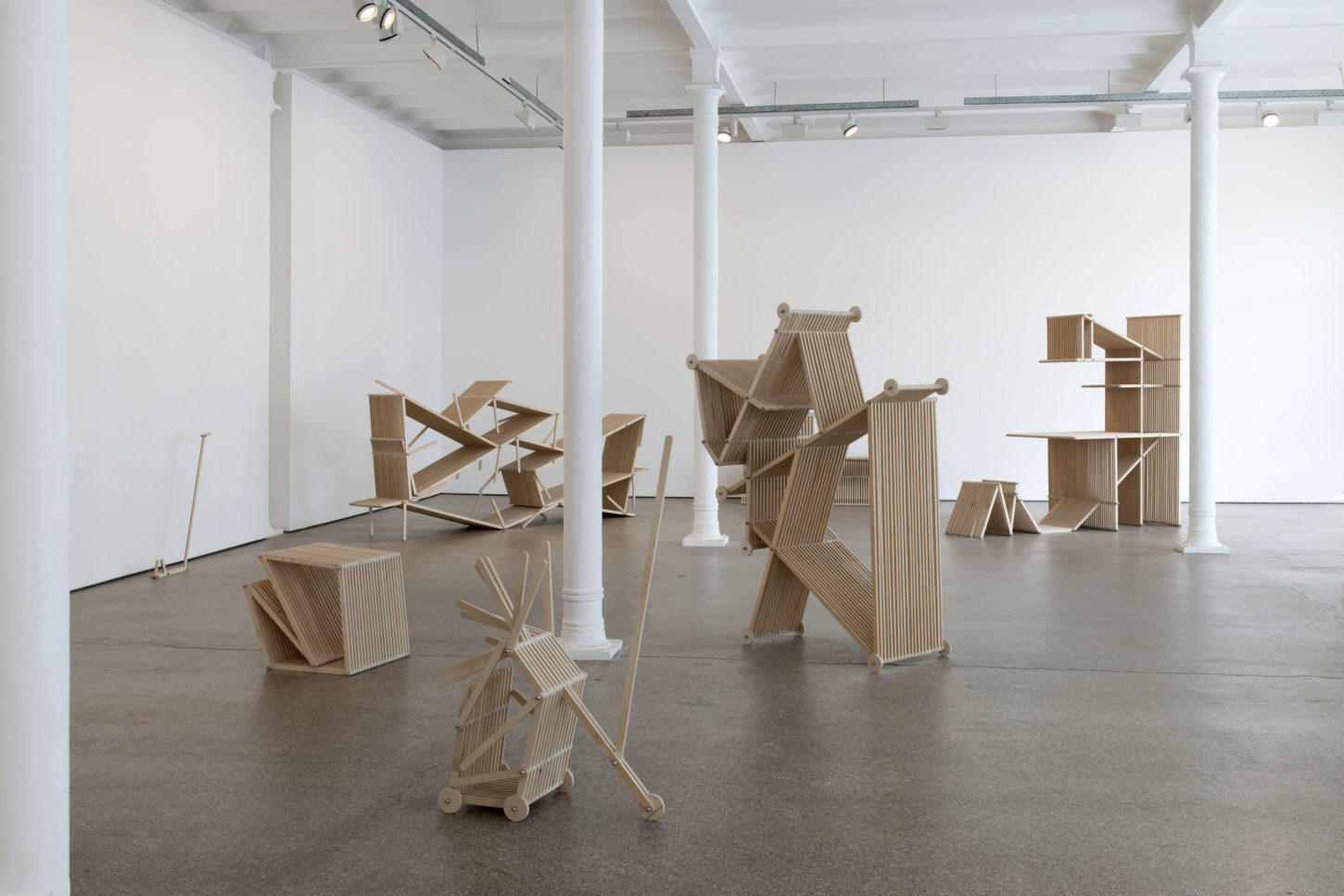The installation for this exhibition has been inspired by Vsevolod Meyerhold’s 1922 production of the eponymous play “The Death of Tarelkin”. Meyerhold’s dynamic and revolutionary theory of theatre was translated into a constuctivist scenography by the Russian artist Varvara Stepanova : ‘performing furniture that can transform, fold, collapse, change its use’. Rather than approaching the designs as museal artefacts, Tobias Putrih reinstates them in a contemporary environment, proposing a series of modular objects that don’t conform to a conclusive definition, but are situated somewhere between sculpture, scenography and furniture.
The choice of fragile materials emphasizes the experimental character of the artist’s method. Yet Putrih has often spoken out about the necessity to link his conceptual starting point with a functional aspect. In this case the utility function is carefully articulated, but the artist gratefuly makes use of Meyerhold’s experiments with commedia dell’arte and the circus, to inserts a degree of playfulness and humour into the designs.
‘Good design and sculpture always make fun of the spectators’ bodies – you always have to suffer a little before you can start enjoying sitting in a good chair, wearing good shoes, driving a good car. The body has to adapt itself, and it takes time before you feel comfortable. It is the same with sculpture – the best sculpture is always on the verge of failing, it is simply an object that does not fit anywhere, that is too strange to fit.’
The stop-motion video, creating an illusion of movement, ads to the multiple status of the objects. The images are mixed with the opening monologue of “The Death of Tarelkin”, performed by Willy Thomas, that contains a change of identity of the main character. This way all aspects of the exhibition merge together in the overriding principle of transformability.
